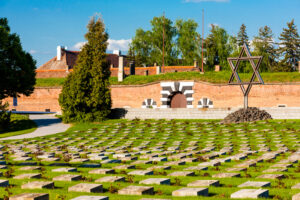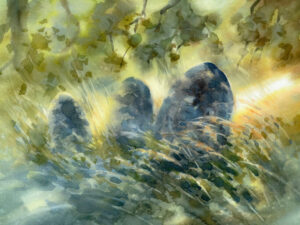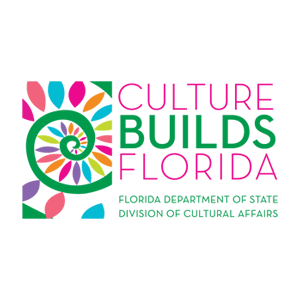The Impact The Holocaust Had On Art
During the Holocaust, millions of Jewish children, teenagers, and adults were subjected to bone-breaking manual labor, brutal beatings, and morbid malnutrition in ghettos and concentration camps across Eastern Europe. Although treated as animals by the Nazi dictatorship, many were reminded of their humanity through artistic mediums. From theater and music to painting and writing, art, in all its forms, gave imprisoned Jews a small outlet for self-expression in an environment that criminalized it. And at one particular concentration camp, art played a monumental role in both saving and sacrificing many innocent Jewish lives.
Terezín: The Camp For Creativity And Art During The Holocaust

Publicized at the time as an artist’s paradise by the reigning Nazi Party, the Terezín Camp has since been regarded as the “Kingdom of Deceit” by its survivors. Decorated by facades of colorful coffee shops, happy houses, and seemingly cheerful children, Terezín’s seemingly aesthetic appeal attracted a great deal of Bohemian and Moravian Jewish artists and creatives. However, this secret ghetto was merely a propaganda tool used to fool the world, its prisoners, and even the International Red Cross into thinking the Nazis were providing pleasant accommodations to willing Jews who excitedly flocked to Terezín from all over Europe. They had no idea that they would soon be ripped from their families and confined to crowded quarters.
Acclaimed Art From The Holocaust
Despite falsely portraying the camp as a haven for artists, the Nazis did permit Terezín prisoners to practice their creative crafts. However, it was only to help the Nazis portray a promising paradise and draw
in more unsuspecting Jews into forced labor and imprisonment.
Between 1942 and 1944, Terezín became a place for inspired and therapeutic artistic expression. Terezín resident and accomplished artist Friedl Dicker-Brandeis taught drawing and painting classes, giving imprisoned Jewish children their only avenue to voice their feelings through art during the Holocaust. He taught the Terezín children to channel their emotions into their illustrations, which became a reflection of their dark days at the camp and high hopes of one day returning home. Their colorful, yet haunting, illustrations are now on display at the Children’s Drawings from the Terezín Ghetto Exhibition at the Jewish Museum in Prague.
Jewish Art From The Holocaust Repurposed As Nazi Propaganda
 Although created for the purposes of self-expression, the art from the Holocaust and Terezín was not always used for such. Brundibar, a musical composed and directed by Terezín prisoner Hans Krasa, acted as the perfect ploy by the Nazis to paint Terezín as something it was not: a happy place with joyful residents. While Nazi officers collected a nice profit for each of its 55 performances, Brundibar’s cast of Jewish children sang, whistled, and danced their troubles away only to meet cruel fates when they were no longer needed. A majority of the children imprisoned at Terezin were ultimately sent to their deaths at Auschwitz.
Although created for the purposes of self-expression, the art from the Holocaust and Terezín was not always used for such. Brundibar, a musical composed and directed by Terezín prisoner Hans Krasa, acted as the perfect ploy by the Nazis to paint Terezín as something it was not: a happy place with joyful residents. While Nazi officers collected a nice profit for each of its 55 performances, Brundibar’s cast of Jewish children sang, whistled, and danced their troubles away only to meet cruel fates when they were no longer needed. A majority of the children imprisoned at Terezin were ultimately sent to their deaths at Auschwitz.
The Holocaust And Art: How Victims Kept Going
The art during the Holocaust allowed imprisoned Jews an outlet to express their creativity and prove their capability. Through artistic mediums, prisoners of all ages could cope with their surroundings and recapture the humanity that the Nazi party tried to take from them. It is truly remarkable that they were able to create something so beautiful during a time of great evil. Their works are a reminder to cling to hope even in dark times. The art from Holocaust showed them, and the world, that even if survival was not possible, their art and their story would live on.
Learn more about the Holocaust and Art by visiting the Holocaust Memorial Center today.




